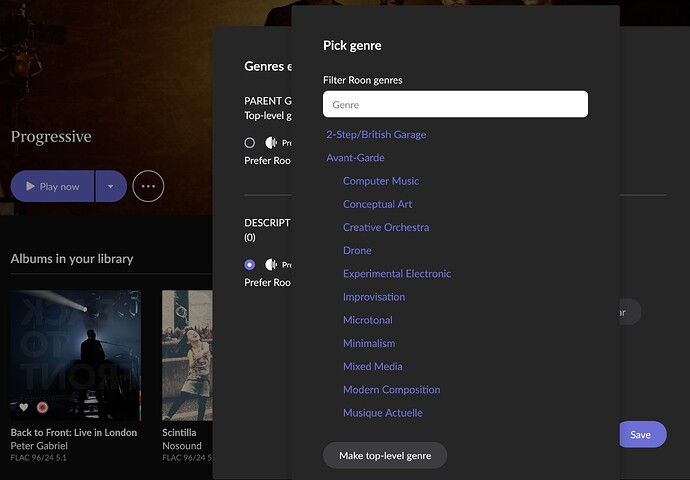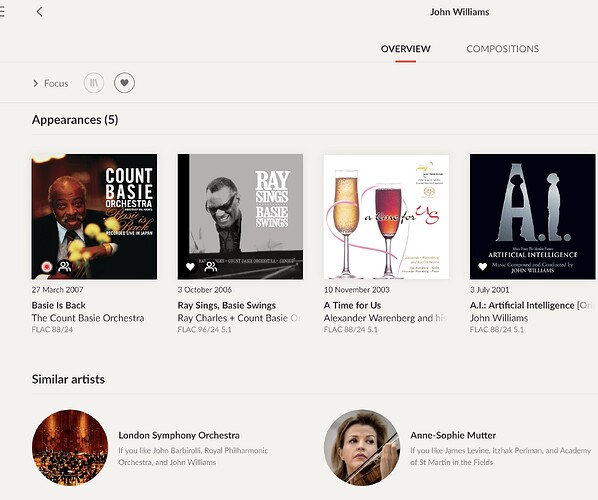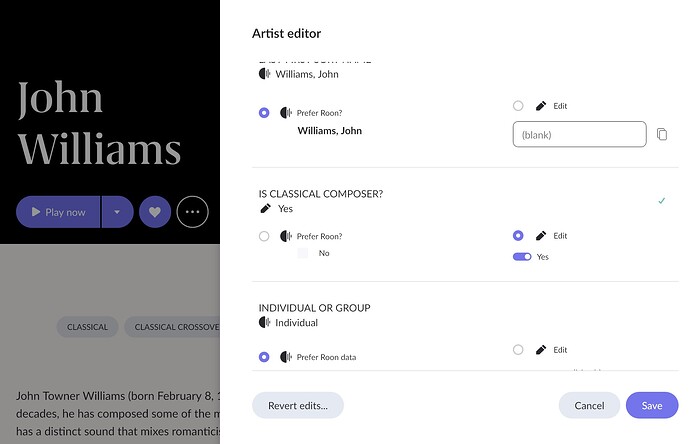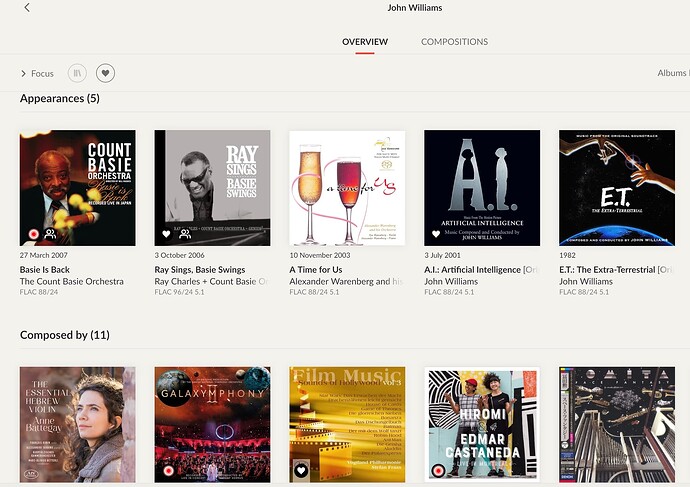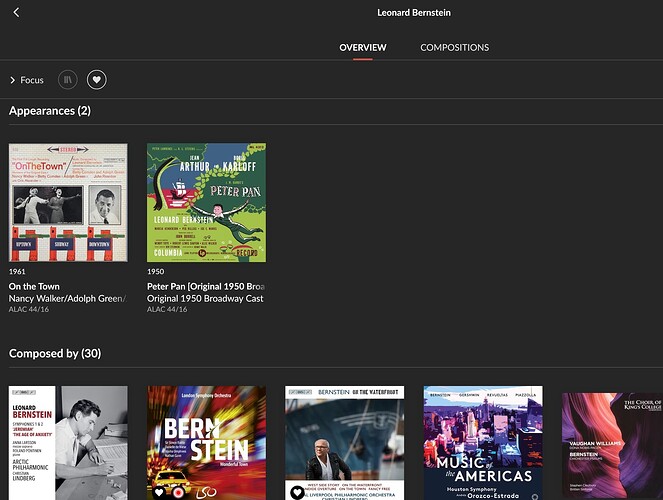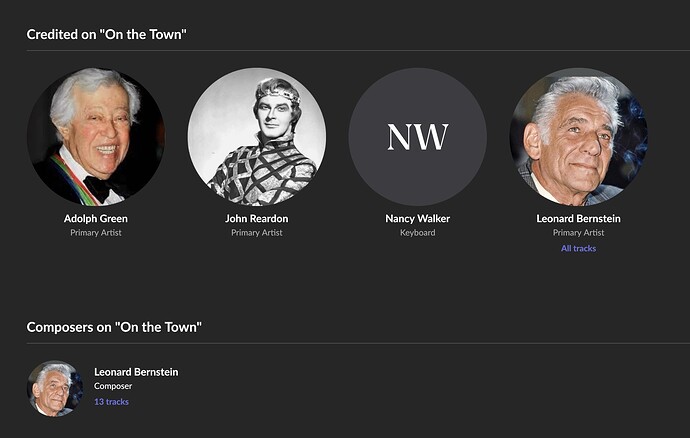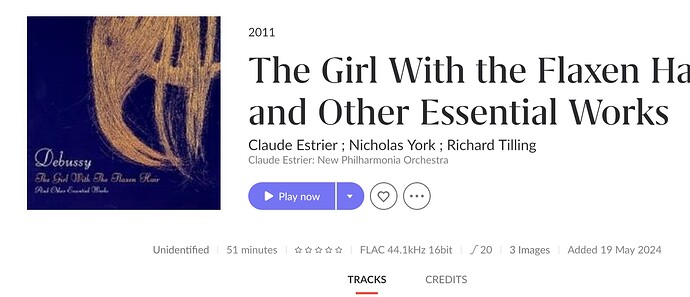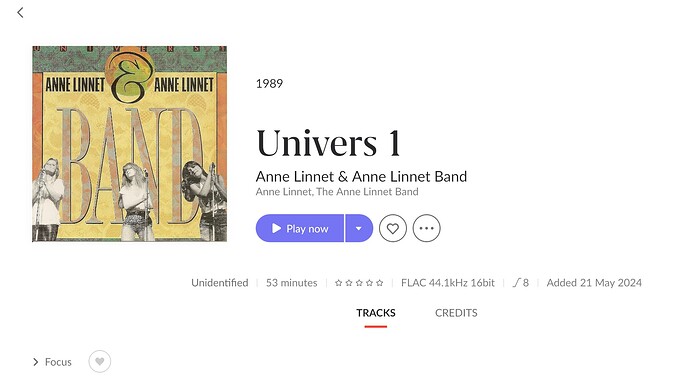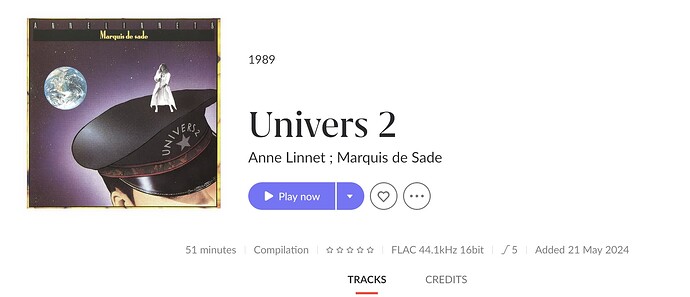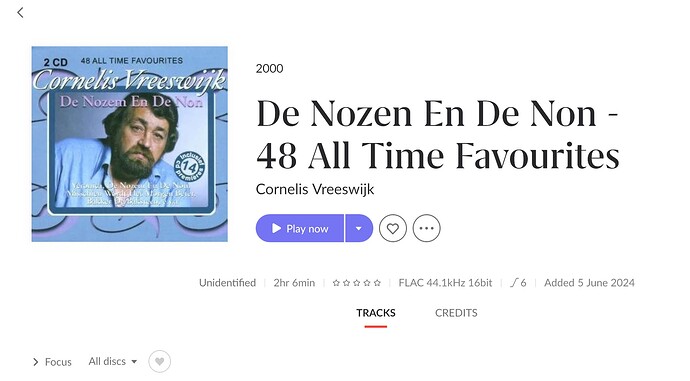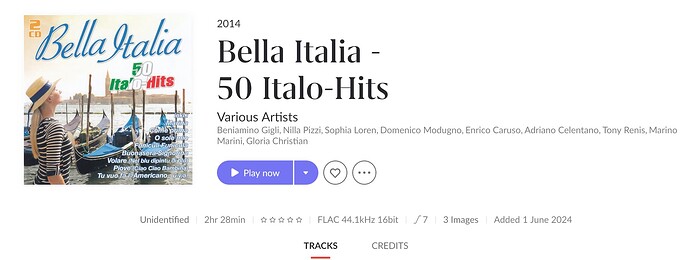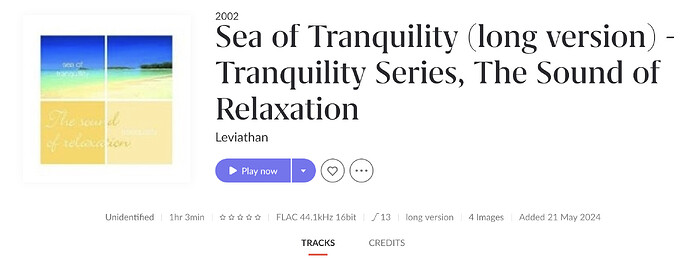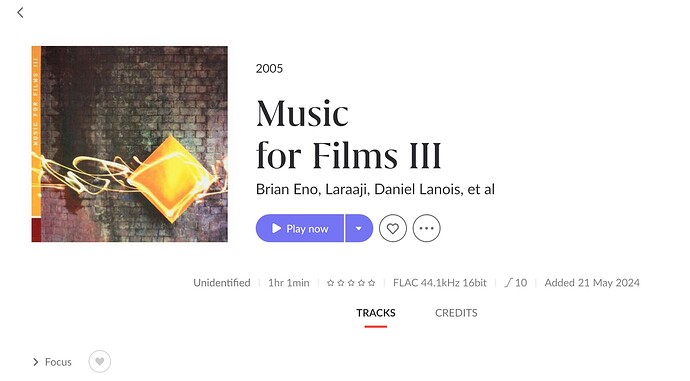Now knowing how to find the unidentified albums in an easy way, I am working with making them identifyable, and it sure looks like adjusting the metadata to be more understandable for Roon helps for some albums.
Of course, I also have promo, demo, magazine, etc. albums, which by large have not been ripped yet in FLAC format (and I have detached the old MP3s of them), so I do expect those to give problems.
But there are still some that are actually mainstream albums already ripped that are not recognized, and this will then, as you suggest require some detective work. An example here:
One was withdrawn from the publisher (but is part of a series of two, both withdrawn, where the other indeed has been recognized):
Others are local publications that do not seem to be registered in the big metadata databases, even if they may have sold in large amounts locally - an example from Holland here:
But some may be local productions (like this one from Germany), but still - having sold in large amounts during several years and to be easily found in Discogs, which is my goto-site for information:
Then, as expected, there are some with nature sounds and other special things, that even have been published under different names, often without any artists mentioned - one of those:
But then there are the mystical cases that really should be recognized, such as:
Actually, even more mystical - some were not identified at first, but when I try again, they are immediately found. Why do they need a second search? Here is one of them, now identified:
Nevertheless, I have just under 200 less, having fixed maybe 30 or 40 already, so I am confident that I will end up with 100 or less (but this is before ripping the expected problem albums - especially such that have no text in latin letters, which traditionally are difficult to find anywhere), which are from, e.g., India, russia, or Denmark, or which are such as sampler CDs or never-published demos sent to me by the artist. Probably, a fair goal depends a lot of the nature of the collection 
